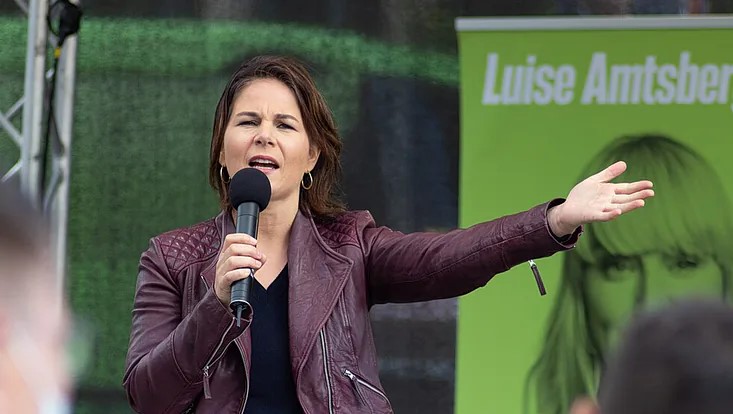Digitale Kommunikation
und Nachhaltigkeit
Foto: UHH/Denstorf
5. März 2025

Foto: Michael Brandtner, CC BY 4.0
In ihrem neu erschienenen Aufsatz „Komplize oder Korrektiv? Die Rolle von Google und YouTube bei der Verbreitung von Verschwörungstheorien zur Kanzlerkandidatin Annalena Baerbock im Kontext der Bundestagswahl 2021“ untersuchen Katharina Kleinen-von Königslöw, Gerret von Nordheim und Anna-Sophie Schütz die Verbreitung einer Verschwörungstheorie zunächst auf dem Messengerdienst Telegram und anschließend für Suchanfragen auf Google und YouTube.
Im Vorfeld der Bundestagswahl 2021 wurde auf Telegram erstmal eine Verschwörungstheorie verbreitet, die die damalige Kanzlerkandidatin Annalena Baerbock mit dem „Great Reset“ verknüpfte und ihr unterstellte als Marionette des Weltwirtschaftforums, Deutschland durch den „grünen Staatssozialismus“ zerstören zu wollen. Aber inwieweit konnte diese Verschwörungstheorie „aus den dunklen Ecken des Internets“ im Bundestagswahlkampf 2021 auch normale Bürger*innen erreichen? Inwieweit fungierten weit verbreitete Plattformen wie Google und YouTube hier als Korrektiv – oder doch als Komplizen?
Basierend auf der Masterarbeit von Anna-Sophie Schütz zeigt der Aufsatz, dass interessierte Bürger*innen bei rund einem Viertel der Suchanfragen über Google zu Webseiten gelenkt wurden, die die Verschwörungstheorie positiv bestätigten. Ein weiteres Zehntel der Links enthielten andere Desinformationen über Annalena Baerbock. Die Suchergebnisse auf YouTube bezogen sich dagegen deutlich seltener auf die Verschwörungstheorie oder Desinformationen, außer wenn sehr spezifische Suchterme (mit BEArbock statt BAErbock) verwendet wurden.
The Role of Google and YouTube in the Spread of Conspiracy Theories
In their newly published article "Accomplice or Corrective? Google and YouTube’s Role in Spreading Conspiracy Theories about Chancellor Candidate Annalena Baerbock during the 2021 German Federal Election", Katharina Kleinen-von Königslöw, Gerret von Nordheim, and Anna-Sophie Schütz examine the dissemination of a conspiracy theory initially spread on the messaging service Telegram and subsequently via search queries on Google and YouTube.
In the lead-up to the 2021 federal election, a conspiracy theory emerged on Telegram that associated then-chancellor candidate Annalena Baerbock with the "Great Reset," accusing her of wanting to destroy Germany through "green state socialism" as a puppet of the World Economic Forum. But to what extent could this conspiracy theory "from the dark corners of the internet" reach ordinary citizens during the 2021 federal election campaign? To what extent did widely used platforms like Google and YouTube serve as a corrective– or were they accomplices instead?
Based on Anna-Sophie Schütz's master's thesis, the article demonstrates that in about a quarter of Google search queries curious citizens were directed to websites that confirmed the conspiracy theory. Another tenth of the links contained other disinformation about Annalena Baerbock. In contrast, the search results on YouTube referred significantly less often to the conspiracy theory or disinformation, except when very specific search terms (using BEArbock instead of BAErbock) were employed.